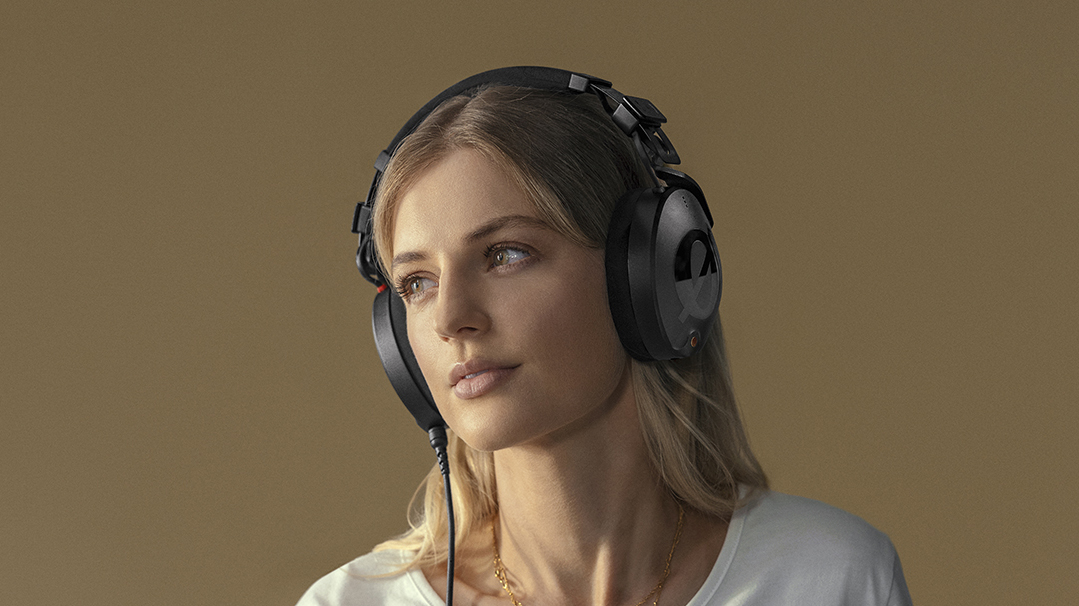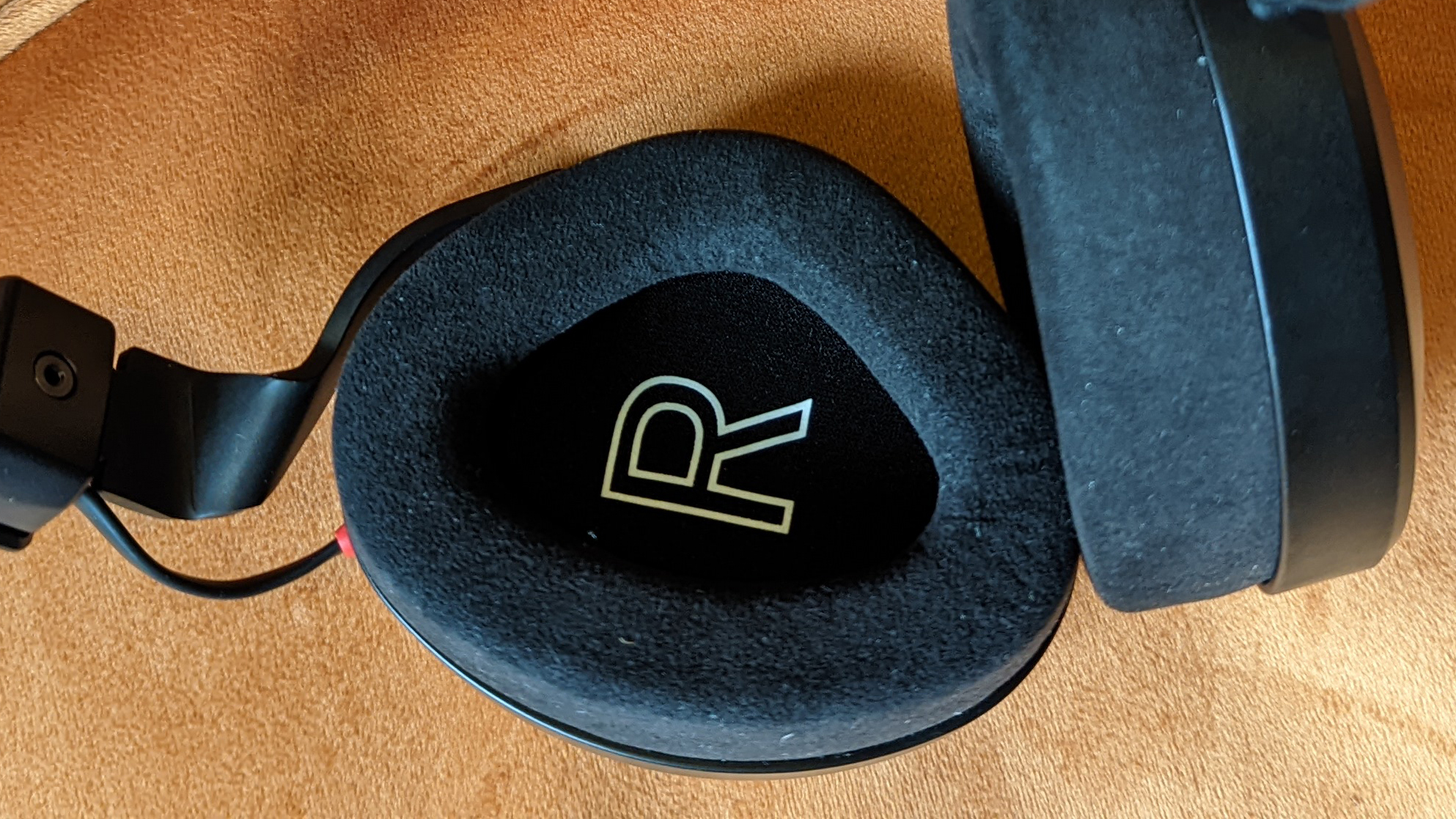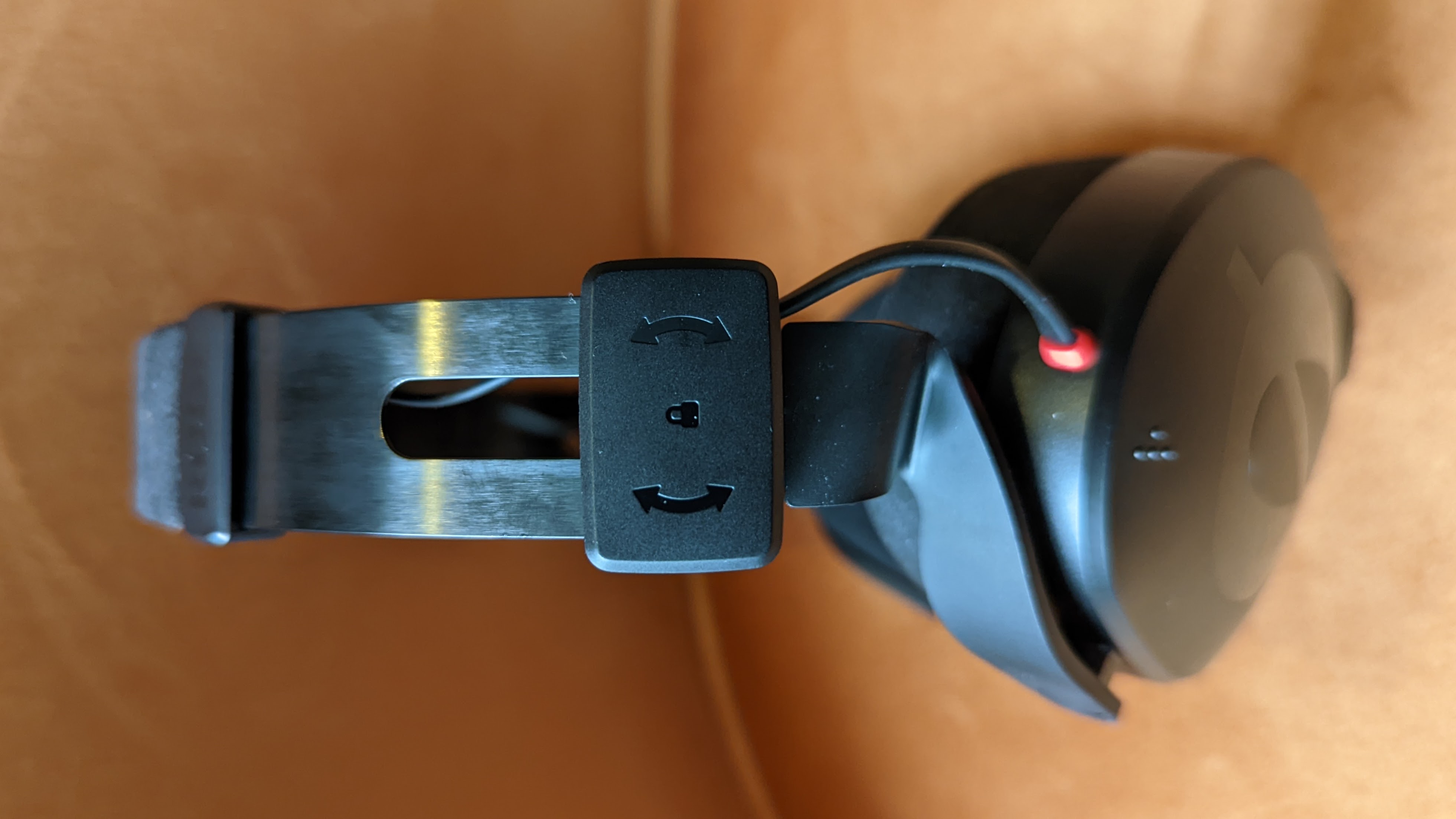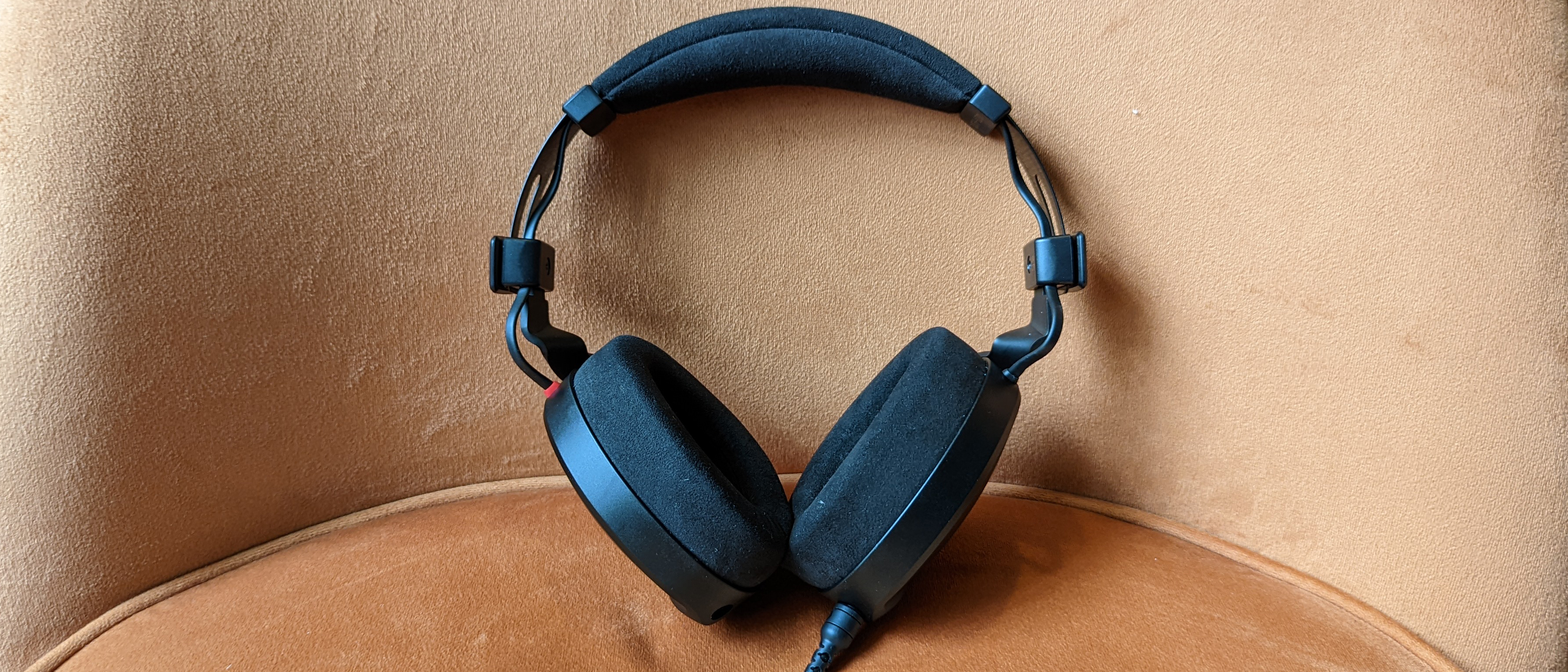TechRadar Verdict
Just like the high-quality microphones that saw the Rode name become synonymous with excellence across the globe, we foresee the NTH-100 cementing itself as a studio staple for years to come – from bedroom workstations to world-class recording booths. Their robust and comfortable design, exceptional clarity, spacious audio and excellent value are the perfect storm for a future classic.
Pros
- +
Amazing clarity and sense of space
- +
Robust and incredibly comfortable
- +
Excellent value
Cons
- -
In-line microphone sold separately
Why you can trust TechRadar
One-minute review
[Update February 1, 2023: As of February 2023, a mic attachment has been released for the NTH-100 headphones. Alternatively, you can also purchase both the NTH-100 and the NTH-Mic in a bundle under the name NTH-100M.]
For decades Rode has been known around the globe for its quality microphones, and now with the release of its first ever pair of headphones, the Aussie company has taken its pursuit of quality to another category.
The Rode NTH-100 is the brand's first ever pair of headphones and are available now for $149 / £149 / AU$249. They're aimed at audio professionals with their studio grade performance, but comfortably appeal to anyone seeking a top-quality listening experience.
They’re cabled, closed-back headphones that don’t feature any of the modern conveniences associated with Bluetooth headphones, but their focus on sound, comfort and build quality easily makes up for this.
The NTH-100 sports a classy and professional appearance, with a build quality to match. All the elements, from the headband to the earcup swivels, give a strong degree of confidence in their longevity and day-to-day durability.
Luxurious features like Alcantara coating on the earcups and headband, as well as cooling gel coupled with memory foam in the cups, make for a comfortable experience, even for longer periods. Despite their large size, these features help to make the headphones practically vanish when worn.
Onto the star of the show: the audio quality is exceptional, living up to Rode’s high standards. Despite being closed-back by design, the 40mm drivers give a similar sense of space and clarity usually reserved for much pricier open-back headphones.
Sign up for breaking news, reviews, opinion, top tech deals, and more.
The audio profile is rather neutral, ideal for monitoring and close listening, but the NTH-100 listening experience manages to be more fun than other monitoring headphones we’ve heard. With that said, you won’t necessarily get the same compression and excitement as you would with the Beats Solo 3 or Sony WH-1000XM4, but you also won’t get the listening fatigue and low-end skew that typically comes with it.
For their price, the Rode NTH-100 are an exceptional pair of headphones that focus on the audio, and don’t forego comfort or durability in the process. For everyday commuters and casual listeners, some Bluetooth alternatives might present a better option, but for professionals or those after a deeper listening experience, these cans excel.

Rode NTH-100 price and release date
- Available now
- $149 / £149 / AU$249
The Rode NTH-100 headphones launched March 29, 2022 for $149 / £149 / AU$249 globally and are available in a single color – black (although four different colors of headband, earcups and cables will be sold separately).
As a point of comparison, Sony’s MDR-1AM2 (entry-level audiophile headphones) launched at twice this price ($299 / £229 / AU$399), and while their lightweight design and exceptional clarity are impressive, the Rode NTH-100 offers audio with a better sense of space, and is enclosed in a significantly more robust design – all for half the price.
Another popular pair of cans worth comparing to are the Audio-Technica ATH-M50x, which have been available for almost five years. As such, they're typically available lower than their retail price at around the same as the NTH-100 ($149 / £149 / AU$249), but the Rode cans blow them out of the water for overall clarity and space in the audio, as well as comfort.
As of February 2023, you can pick up the the NTH-100 bundled with a microphone under the name NTH-100M. This headset is priced at $189 / AU$329 (UK pricing yet to be revealed). Alternatively, if you already own a pair of the NTH-100 headphones, the NTH-Mic has also been released. It's a standalone boom mic attachment and will only set you back $69 / AU$99 (UK pricing currently unavailable). At this time, we have not reviewed the NTH-Mic or NTH-100M.
Design
- Extra measures for comfort
- Classy and professional look
- Premium materials for the price
The NTH-100 are cabled over-ear headphones, and from the outset you’ll notice they lack features found on many wireless counterparts. There’s no microphone, transport or volume controls, voice assistant, noise-cancellation or (obviously) any form of wireless connectivity. This, however, is by design.
These Rode headphones are aimed at studio use and focused listening, which means they’re not trying to fill the role of everyday cans for your commute or walk (although they still manage this rather well, despite their intention otherwise). Taking this into consideration, the NTH-100’s design is phenomenal.
Aesthetically, the headphones definitely look like professional kit – they’re not as sleek and minimal as some of the Bluetooth cans out there with their visible cabling and somewhat techy appearance, but their pure black palette is more suave than most gaming headsets and other such gaudy designs. With that said, there’s an option to swap out the earcups, headband and cable for four different colors (all of which are sold separately) if you’d prefer some personalization.

Rode’s iconic “Ø” is emblazoned prominently on the exterior of each of the rather large earcups, as is the brand’s small golden circle motif, so there’s no mistaking who made the headphones. Overall, we’d say the design maintains class without trying to hide its professional intention.
The NTH-100 boasts solid construction, with sturdy materials like the stainless spring steel headband and solid plastic of the smaller components all giving the impression of robust design. Even the swivels for the earcups – a common weak point in headphones – feel more durable than is typical. It’s all rather reassuring for the longevity of the product.
Rode claims that the headband has been rated for the equivalent of 25 years of use, the wiring that links the earcups can withstand 25kg of force, and the cable and earcup sockets can each withstand 12kg. The bayonet mounting of the detachable cable is also designed to deliberately give way before that of the headphone connector, meaning that in an especially hairy situation, you’ll only be replacing the cable rather than the cans themselves.
In the box is a cloth pouch to further help protect the headphones, a ¼-inch adapter and a nice long (2.4m) cable, with the option to buy shorter (1.2m) cables separately. The long cable is mostly a blessing, but also a minor curse. For its intended purpose, it means you can stand and move around while still stationed by your computer or monitoring device, but if you only need it to travel a short distance, the extra length can add some weight to your head (albeit minor) and some extra microphonics, or cable noise, when it brushes against something.

The earcups swivel both left-to-right and up-and-down, but only so much as to provide a comfortable position with them flush against your head. Their shape is somewhat triangular rather than the classical circular or ovaloid shapes found in most headphone designs.
We found this shape to suit our ears perfectly, encapsulating them comfortably, leading us to wonder why it isn’t an industry standard. One extra convenience on the earcup front – each one features an audio connection, meaning you can have your cable running to the left or right cup as desired.
Another feature we’d love to see appearing on more headphones is a mechanism Rode is calling, FitLok. This amounts to two simple mechanisms that lock the adjustable headband in place once you’ve found the appropriate size. It’s incredibly simple to use, fluidly variable, and saves you from the hassle of readjustment every time they get nudged or jostled when handling or carrying them in a bag.

Both the earcups and headband are coated in Alcantara – an incredibly soft, plush and breathable material that’s typically reserved for designer products and supercar interiors. The headphones are exceedingly comfortable to wear and, despite their large size, practically disappear when worn. There’s no feeling of constriction, even with this reviewer’s massive head, and the two-way swivelling earcups ensure all the appropriate contact points of the cans are in their right places.
Furthermore, the earcups are crafted from a combination of memory foam and CoolTech gel, which (along with the Alcantara cladding) helps to reduce heat build-up during longer listening sessions and still manages to create a decent seal for audio isolation.
Although we did mention that these studio headphones aren’t trying to compete with everyday wireless cans, we would have loved to see the inclusion of a microphone in the NTH-100, especially considering Rode’s immense talents in this department. This would make them ever-so-slightly more suited to being permanently plugged in as a combination personal/professional pair of headphones at your primary workstation.
Considering the fact that the headphones feature TRRS connections and that the cabling is detachable and sold separately at different lengths, it’s conceivable that Rode may release a cable that features an in-line microphone down the road, but for now, assume this capability isn’t present.
Audio performance
- Incredible sense of space
- Open-back sound in closed-back cans
- Excellent clarity and neutral response
With the focus squarely on audio performance for the Rode NTH-100, we were very pleased that our expectations were met, and even surpassed. While aimed towards professional use, these cans sound so good we’d recommend them to anyone wanting a detailed listening experience.
Despite sporting a closed-back design, these headphones offer many of the advantages of open-back cans without their inherent drawbacks (namely high pricing and sound leakage). The sense of space offered by the NTH-100 is among the best we’ve encountered, offering up excellent separation and reducing the fatigue that can come with listening to ‘close’ sounding audio for extended periods.
This means you’ll be hearing different elements and instruments distinctly, even in dense mixes. The overall clarity is superb, with no perceivable distortion at high volumes – the presence and weight of a track is still conveyed admirably with plenty of headroom to spare, and there’s no sign of the compression inherent to many headphones that offer more ‘excited’ audio signatures.

Skrillex’s track Supersonic (My Existence), featuring Noisia, Josh Pan and Dylan Brady, offers up its explosive suckerpunch of a drop with rich detail and clarity while retaining its immense impact. The haunting lead vocals in the verse drift over the tension-building, warped samples and swelling sub bass, while the crisp fizz of the bass takes centre stage at the drop, without dominating and squashing out the other surrounding elements.
The same is true for the Yung Gud remix of Foreign Fields by Kacy Hill, with its soaring and reverb-drenched twin climaxes retaining their punch despite all the extra room they’re given to breathe. Fringe elements, like the bird calls, ocean sounds and hi-hats are given clear space in the overall mix, appearing distinct over more dominant elements but not detracting from impression.
For something a little lighter, the beautiful ballad Me (Heavy) by Fred Again Is revealed in all of its textural and artifact-laden beauty when listening on the Rode NTH-100. The heavily filtered and stuttering drum loop doesn’t compete for space with the wonky, unhinged lead line, nor the gorgeous lead vocals when they land, despite how deliberately lo-fi the production is. The intimacy of Fred’s vocal line is made all the more present, with the track’s lush harmonies, pads and piano lines supporting his breathy delivery without getting in its way.
As you may be able to tell from these examples, the spatial clarity, headroom and separation produced by the NTH-100 is exceptional, so much so that it breathes new life into tracks we’ve been listening to on heavy rotation for years.
As for the frequency response, we found it to be incredibly neutral (as is to be expected from professional studio monitors), with less sub-bass and low-frequency dominance than you’d find in many sets of Bluetooth headphones.
While this can come across as ‘unexciting’ if you’re used to the likes of Sony and Beats cans, we found Rode’s delivery to be considerably more enjoyable for casual music listening than many other monitor headphones we’ve sampled (such as from Sennheiser and Audio-Technica). The NTH-100 somehow manages to inject some fun into the clinical role of reference audio, and we suspect its sense of space has a lot to do with this.
Should I buy the Rode NTH-100?

Buy them if...
You want professional monitoring on a budget
So many pro-grade audio products come with hefty price tags, it’s nice to see how incredibly affordable these Rode headphones are considering the stellar quality when it comes to both build and audio.
You want to hear rich detail in your music
Even for those that don’t work professionally with audio, the Rode NTH-100 offer such exceptional clarity and sense of space in their music delivery that we’d recommend them to anyone looking to delve deeper into their favorite songs.
You need a comfortable audio workhorse
The build quality and ergonomics of these headphones are both something to be marvelled, with their durable materials, luxurious comfort additions and replaceable components allowing for lengthier sessions and an impressive degree of longevity.
Don't buy them if...
You want Bluetooth and other features
It may seem obvious by now, but these cans don’t have any of the modern features and quality-of-life improvements featured on many of today’s Bluetooth headphones. Only get these for their pure audio prowess and if you can handle a cabled connection.

